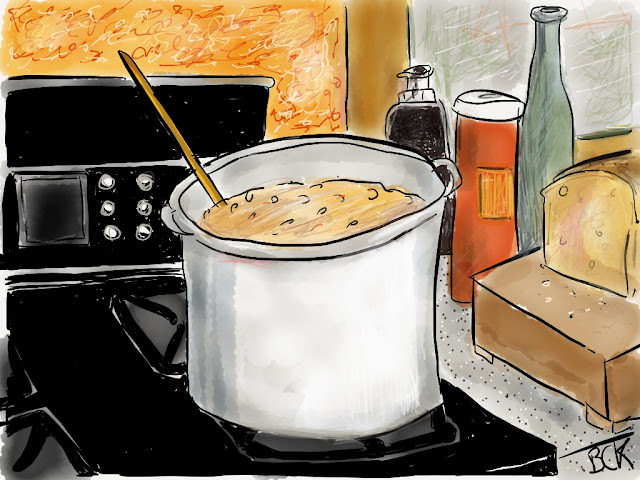SAVORY ROAST SEITAN is an easy dish to prepare. I usually just call it roast
gluten, but I didn't want to scare anyone off from trying it.
Gluten is the protein part of the wheat berry — the part left over if you
wash away all the starch from whole wheat flour, after mixing it with water
and kneading it a while into a dough ball. You can do that if you want, but
it's a lot easier to just buy some vital wheat gluten powder, available at
natural food stores.
I checked with Arrowhead Mills, one of the main producers
of gluten in this country, and they are still making their own and not
importing it from China like the pet food companies do, so there is no need
to worry about melamine contamination if you buy their brand. Ask if they
are the source of the bulk gluten powder if that's what your store carries.
Seitan is a seasoned cooked substance made from gluten, which is available in
the freezer or refrigerated sections of your natural food store. The plain
gluten dough ball is usually cooked in a seasoned broth for an hour or so to
make it the traditional way, but I find it easier to do it my own way at home,
which is probably cheaper too.
1 package or 2 cups — gluten powder
2 Tblsp. — nutritional yeast flakes
1/2 tsp — garlic powder
1/4 tsp — ginger powder
Sprinkle — cumin seeds or powder
Dash — red pepper
1/8 cup — tamari
1 1/2 cups — water, or more as needed
1/8 cup — tamari
1 1/2 cup — water
Several — peeled cloves garlic
Oil for pan
Method
Preheat your oven to 350 degrees Fahrenheit.
Once you've brought home a package of the gluten powder, which should be about
two cups, dump it in a mixing bowl and add the following seasonings, stirring
them all together: two tablespoons nutritional yeast flakes (better pick some
of those up when you get the gluten, along with the tamari soy sauce you'll
need), half a teaspoon of garlic powder, a quarter teaspoon of ginger powder,
a sprinkle of cumin seeds, and a dash of red pepper. You can use a little more
of any of those if you'd like.
Add an eighth cup of tamari soy sauce to one-and-a-half cups of water and pour
that into the dry mixture. Stir it together with a fork, cleaning the sides of
the bowl with the forming gluten ball. If there is any leftover dry mix, then
just add a little more water. It will form a springy, spongy ball.






